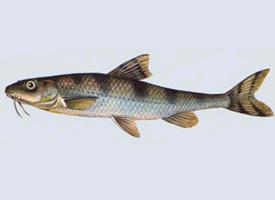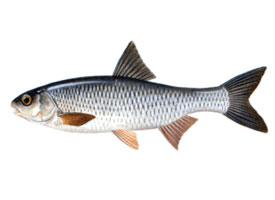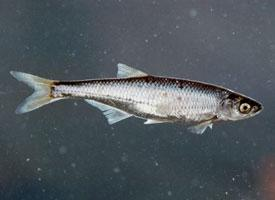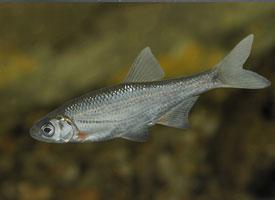
Váhy a míry
| Délka | 15 cm |
|---|
Biologická data
| Délka života | 8 r |
|---|
Popis zvířete
The Danubian longbarbel gudgeon, scientifically known as Romanogobio uranoscopus, is a fascinating and somewhat elusive species of ray-finned fish belonging to the Cyprinidae family, which encompasses many other freshwater species such as carps and minnows. This particular species is endemic to the Danube River basin, thus the name "Danubian". Its habitat spans across various countries through which the Danube flows, including Germany, Austria, Hungary, and Romania, among others.Characterized by its slender, elongated body, the Danubian longbarbel gudgeon typically reaches a length of about 10 to 15 centimeters, though some individuals may grow slightly larger. Its body exhibits a silvery-gray coloration on the dorsal side, gradually transitioning to a lighter, almost white hue on the ventral side. One of the most distinctive features of this species is its long barbels, which are sensory organs located near its mouth. These barbels, significantly longer than those found in related species, enable the fish to detect prey and navigate the riverbed's murky waters.
The fish's diet primarily consists of small invertebrates, including insects, larvae, and occasionally small crustaceans. Its feeding habits play a crucial role in the aquatic ecosystem, helping to control populations of these invertebrates and contributing to the nutrient cycle within its habitat.
Reproduction for the Danubian longbarbel gudgeon typically occurs in late spring or early summer, when water temperatures rise. During this time, females lay their eggs in gravelly or sandy substrates, often in shallow waters. The eggs are externally fertilized by the males, and the parents do not exhibit any form of parental care post-spawning. The larvae and juveniles tend to stay in protected shallow areas until they mature.
Despite its relatively widespread distribution within the Danube River basin, the Danubian longbarbel gudgeon faces several threats, including habitat degradation, pollution, and the construction of dams and other water management structures. These activities can lead to changes in water flow and quality, impacting the species' ability to find food and reproduce successfully. Additionally, invasive species introduced into its habitat can compete with the Danubian longbarbel gudgeon for resources or directly predate on them.
Conservation efforts are crucial to ensure the survival of the Danubian longbarbel gudgeon. These may include monitoring population trends, protecting critical habitats, and implementing measures to mitigate the impacts of pollution and water management projects. Given its role in the aquatic ecosystem and as an indicator of water quality, preserving this species is not only important for its own sake but also for the health of the broader freshwater environments it inhabits.
Podobná zvířata
Nové fotografie zvířat
Top 10 zvířat
- Chinese water dragon (Physignathus cocincinus)
- Galápagos tortoise (Geochelone nigra complex)
- Dolphin gull (Leucophaeus scoresbii)
- Japanese macaque (Macaca fuscata)
- Colombian red howler (Alouatta seniculus)
- Sea urchins (Echinoidea)
- Diana monkey (Cercopithecus diana)
- Moustached guenon (Cercopithecus cephus)
- Colossal squid (Mesonychoteuthis hamiltoni)
- Common house mosquito (Culex pipiens)


